|
I'm sure I wasn't the only one to do a little happy dance in my mind when I found out there's a new book coming out in September from Kate Albus, author of A Place to Hang the Moon. Any of you fellow happy dancers? Kate's debut novel completely stole my heart and won an honored place on my shelf, so I couldn't wait to see what she'd write next!
Like A Place to Hang the Moon, Kate's second book is set during the Second World War, but Nothing Else But Miracles takes place on the other side of the pond, in Manhattan's Lower East Side. Twelve-year-old Dory Byrne and her brothers Fisher and Pike have to fend for themselves while their young father is fighting overseas. They rely, as their father told them to, on their neighborhood—their community in Manhattan that has always been there for them. But when their friendly landlord suddenly dies, their security is threatened. Luckily the neighborhood steps up in an unexpected way—Dory discovers an old, abandoned hotel, accessed only through a rickety hand-operated elevator, above their friend's restaurant. Hiding away there provides them the secrecy and safety they need when their father goes missing—all the while their neighbors continue to provide them with the love and help they didn't even know they needed. Did I really have to say more than "old, abandoned hotel" for you to know I'm obsessed about this story? I mean, HOW COOL IS THAT? (And it's based on a real place!) Add it to my list with Bag End, the Metropolitan Museum of Art, and the Boxcar Children's boxcar, of "places books convinced me I want to live." But beyond the evocative setting, Dory's story has a heart as big as the Big Apple itself. Her struggle to find safety in insecure times, to choose love over resentment, and to cling to hope when all seems lost are what make Nothing Else But Miracles a truly excellent book, and one that you'll want to share with everyone you know. Nothing Else But Miracles releases September 5—trust me, you want to preorder it now so you can read it as soon as possible. Many thanks to Netgalley and Holiday House for providing me an electronic review copy in exchange for my honest opinion. For more Marvelous Middle Grade Monday recommendations, check out Always in the Middle!
6 Comments
Book to Share: Hope in the Valley, by Mitali Perkins (My final read for Vintage Kidlit Summer!)8/18/2023 It’s not every day that one of my all-time favorite, overlooked classics of a book is mentioned in a new middle grade novel. When Pandita Paul, the main character of Hope in the Valley, by Mitali Perkins, discusses Maud Hart Lovelace’s Emily of Deep Valley with the elderly man she has befriended at an assisted living facility, my little readerly heart squealed.
But it’s REALLY not every day that a new middle grade novel actually reminds me of one of my all-time favorite, overlooked classics of a book. Throughout Mitali Perkin’s story—from the title on out—little nods to Emily of Deep Valley come out in theme and words and style. Most noticeably, Pandita’s growth into a young woman who is confident enough both to speak her mind and to change her mind (and isn’t that the harder of the two?), echoes Emily’s growth in Lovelace’s novel. Is it a retelling? Not in the least. Will Emily’s fans rejoice to find a modern book full of the same heart and strength and old-fashioned goodness? Absolutely. Here’s the publisher’s description: Twelve-year-old Indian-American Pandita Paul doesn't like change. She's not ready to start middle school and leave the comforts of childhood behind. Most of all, Pandita doesn't want to feel like she's leaving her mother, who died a few years ago, behind. After a falling out with her best friend, Pandita is planning to spend most of her summer break reading and writing in her favorite secret the abandoned but majestic mansion across the street. But then the unthinkable happens. The town announces that the old home will be bulldozed in favor of new―maybe affordable―housing. With her family on opposing sides of the issue, Pandita must find her voice―and the strength to move on―in order to give her community hope. “Activism” is a charged word right now. Everywhere I look, it seems like someone is picking a fight in the name of “activism” instead of learning to sit down with their neighbor and see their point of view. Sometimes it seems like a very modern idea, but old books from Emily of Deep Valley to Rose in Bloom—not to mention everything Dickens ever wrote—remind us that activism is a necessary part of grappling with the injustice that has existed in the world since the fall of man. Just like those old stories, Hope in the Valley is about a young woman who wants to make the world a little better, who sees a wrong and is compelled to leave her comfort zone in order to right it. But her activism is a far cry from screaming protests and hard-headed insistence. In fact, it’s the time that Pandita spends with people who disagree with her that most influences and informs the way she makes her case. Any of us who have struggled with how to stand up against the evil in the world without adding to it will be inspired by the example she sets for us. Auntie Mitali, thank you. You’ve written the classic story we need in 2023 and for generations to come. (Note: I happened to read this during my last week of the Vintage Kidlit Summer reading challenge that Anna Rose Johnson and I are hosting. I didn't realize when I started how perfectly it would fit into the week's theme: A New Book with a Vintage Feel! I'll have a recap of my summer reading very soon, but in the meantime, find this lovely book!) I remember the first time I cracked open The Lion, the Witch, and the Wardrobe—I was ten or so, I think? Like the Pevensy children, I fell right into the world of Narnia and never looked back. I didn’t need to get used to the world or think too hard about justifying the magical system. I just lived and breathed the story. For me, any good fantasy story must have that same element of naturalness. If I can’t fall right into it, it’s probably not the fantasy story for me.
That feeling of naturalness is the first thing that struck me (when I stopped to think about it, which I didn’t right away because the story was so compelling) about Emma C. Fox’s soon-to-be-released The Carver and the Queen. The story follows Petr, an orphaned Russian serf who longs to become a renowned and succesful carver of malachite, and Lena, the housemaid to Petr’s teacher who likewise dreams of better things, particularly things better than the arranged marriage to the town’s cruel bailiff. In the process of chasing his dream and his chance to win his and Lena’s freedom, Petr falls into league with Malachanitsa, a cunning sorceress, queen of the underground malachite kingdom. The limited magical elements (no keeping track of complicated systems here!) and battles between gain and selflessness, good versus evil—and of course the alluring evil queen—kept up the Narnia vibes throughout the entire story. It also reminded me, in its fantasy/historical setting and lyrical prose, of Shannon Hale’s early works, particularly The Goose Girl and the other Books of Bayern. It would probably appeal most to readers of the same age as those books as well—advanced 11-year-old readers through teens (and adults, as well!). The Carver and the Queen releases October 3, but you can preorder it now. Many thanks to Owl’s Nest Publishers for the review copy of this book—my delighted opinions are entirely my own. Good morning, friends! I'm so excited today to welcome Rhonda Ortiz, author of the historical novel In Pieces and its sequel, Adrift, which releases today (8/8)! You guys are going to love reading what Rhonda has to say about her writing and life--I had so much fun with this! Before we get started, here's a little more about Rhonda: Rhonda Ortiz is a lay Dominican, award-winning novelist, nonfiction writer, and founding editor emerita of Chrism Press. A native Oregonian, she attended St. John’s College in historic Annapolis, Maryland and now lives in Michigan with her husband and children. Find her online at rhondaortiz.com. FEH: Welcome, Rhonda! I've read so many books about the American Revolution or about the Napoleonic Wars from French or English perspectives, but In Pieces and Adrift are two of very few I've read set in America during the 1790's. What was it about that time period and location that first sparked a story? RO: Great question. My first attempt at writing Molly Chase’s story was set in 1770s England with an entirely different cast of characters—not even Josiah Robb was there, if you can believe it. Frankly, that story stank. It had a properly structured plot, but the characters had zero chemistry, and I knew deep down that I was missing something fundamental. The Robb family, back in Boston, hovered on the fringes of my imagination, and as soon as I let them into that story, Molly herself came alive. So that was Step One. Step Two came of researching the time period. Josiah is a sailor, of course, and when I learned that over ten thousand American merchant sailors were pressed into British naval service during the French revolutionary wars, I knew I had my time period. FEH: You jump into the historical time and place in such an immersive way in your stories, and you particularly brought the relatively obscure worlds of dressmaking, sailing, and early espionage to vivid life. What area of research required the most effort from you? Which did you enjoy the most? RO: My answer is the same for both questions: everything related to nautical life! The Age of Sail lends itself to romantic visions of men perched upon topgallant masts, the wide sea stretched before them in all directions. But the reality…and the details… I had to learn to sail in my head in order to write Adrift, and what was more, I couldn’t always take the easy way out by writing the sailing scenes from the lubber’s point of view. Writing from Josiah’s viewpoint meant getting both the language and the sailing itself right. Sailing in general has its own jargon, quite thick and difficult to learn, and sailors can be persnickety about its usage. I don’t know what I would have done without my boating beta reader! This said, I’m right proud of myself for having learned as much as I have. FEH: What was your favorite bit of research that never made it into your story? RO: Going back to that failed 1770s English-set story: I learned a fair amount about the history of recusant Catholic families in England. Maybe someday I’ll work that up into a story. FEH: As a Catholic writer, what were the challenges of writing devout, non-Catholic characters? RO: I’m a convert, so writing Protestant points of view is like speaking my native tongue. The greatest challenge is the translation problem: how does one depict various Protestant ways of thinking and being in a manner that makes sense to Catholic readers and doesn’t repulse them? That evangelical fiction is “preachy” is a common cant, but I suspect the problem is largely cultural. Much—not all—of Protestant Christianity tends to be heavily dialectical in its expression, which is not the case for Catholic and Orthodox Christians. What sounds “preachy” to everyone else is perfectly normal for them. In the end, I decided the best approach was to show Protestants as they are, as expressed by each individual character, with respect to denominational differences, and keeping in mind both the religious landscape of late eighteenth century Boston and the influence of various Enlightenment philosophies on religion. Josiah and his mother, as Congregationalists, like to discuss and debate; Molly, as an Anglican, lends more toward liturgical and spiritual experience. And so on. FEH: I've heard romantic stories (including the works of Austen, Montgomery, and Alcott) criticized as setting up unrealistic expectations of what a relationship should look like. I was thinking about those comments as I read your story, which constantly struck me as a realistic view of courtship and marriage, touched with an optimistic joy and hope. (I guess I'm showing my cards here, since I think optimism and realism go hand in hand.) What would your response be to such comments? RO: As a woman writer, the best way to curb romantic idealism is for me to ask my husband for his feedback. I have to chuckle at the number of times Jared has told me, “A dude wouldn’t do that.” For male writers, the reverse is true. Female archetypes abound—the angel, the mother, the temptress, the femme fatale, Action Girl, etc.—which are also romantic ideals. Archetypes, male or female, are but a starting place; the challenge is to go beyond the archetype by allowing each individual character to act as each he or she would in real life. I have also found it helpful to frank about male sexuality, which many romances gloss over. I maintain a light touch in terms of its depiction, but I do acknowledge it. The secondary cast of characters have been particularly helpful here, particularly Mark Findley, Josiah’s raffish friend. Finally, a few rapid-fire questions:
FEH: Who's your favorite Doctor of the Church? RO: St. Thomas Aquinas! FEH: What's your favorite pizza topping? RO: All of them? I’m an equal opportunity pizza eater, and that includes Canadian bacon and pineapple. My New York Italian-Puerto Rican husband thinks pineapple on pizza is an abomination. I suppose he’s allowed to be an expert on these things, but, hey, sweet and savory is a great combo. Right? FEH: Mountains or shore ? The Oregon coast is my happy place—and that counts for both mountains AND shore! FEH: Three authors you admire greatly? RO: Sigrid Undset, Patrick O’Brian (a recent discovery), and too many contemporary authors to name: Roseanna White, Stephanie Landsem, Jocelyn Green, Eleanor Bourg Nicholson, Karen Ullo, Natalie Morrill… Another favorite book of mine is Catherine Marshall’s Christy. I also love children’s author Elizabeth George Speare. There’s a little bit of Nat Eaton in Josiah Robb, not going to lie. FEH: Thanks so much, Rhonda! This interview was a lot of fun! RO: Thank you for allowing me to share about my writing! It was my pleasure! Remember, everyone, today is Adrift's RELEASE DAY! Join Rhonda Ortiz in celebration of Adrift by entering the GIVEAWAY and joining the Virtual Launch Day party on Instagram; here's the link to her profile over there: @writingrhonda. Giveaway: rhondaortiz.com/giveaways Launch Day Post: rhondaortiz.com/blog/adrift-is-here #MollyChaseAdrift #MollyChaseSeries |
About meHi! I'm Faith. I blog about books and creativity, family and faith. Welcome! Archives
November 2023
Categories
All
|
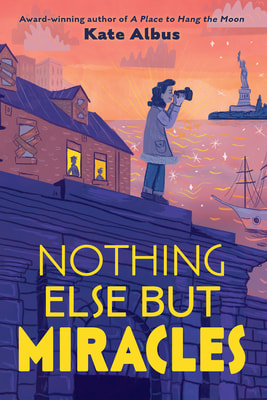
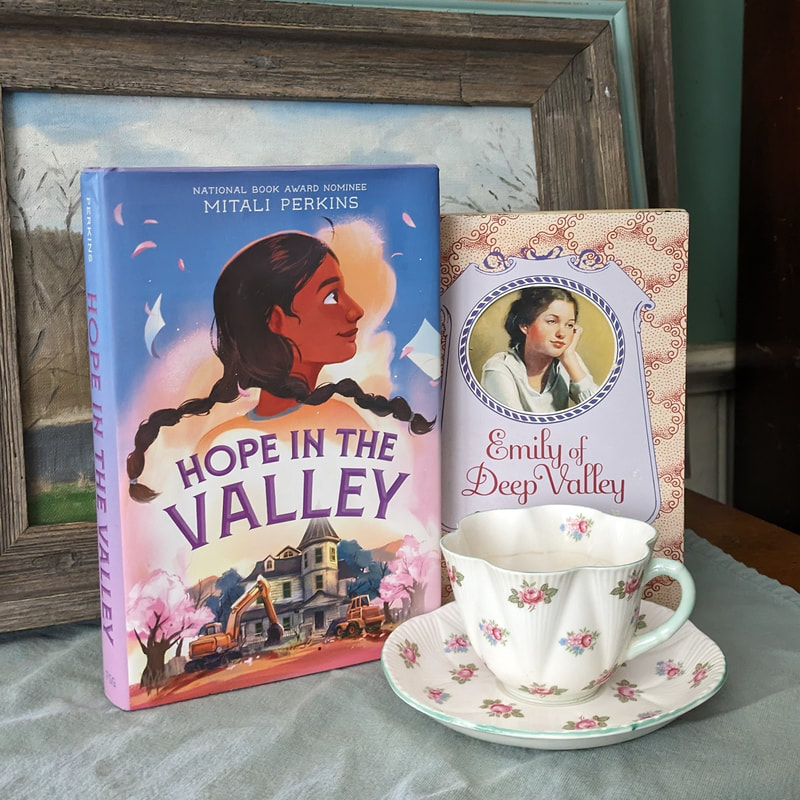
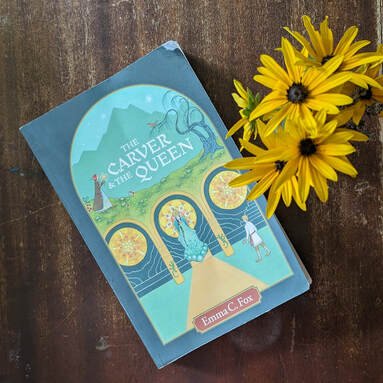
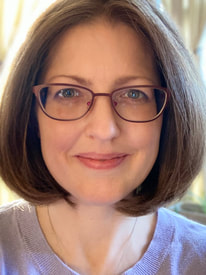
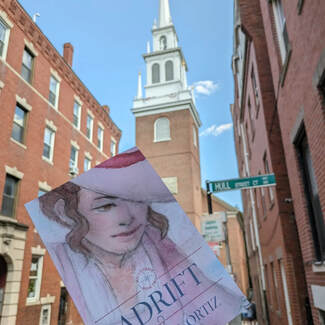

 RSS Feed
RSS Feed